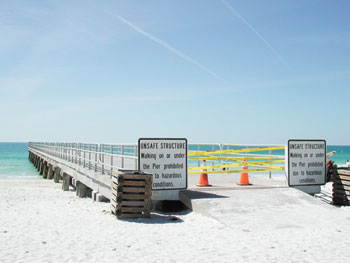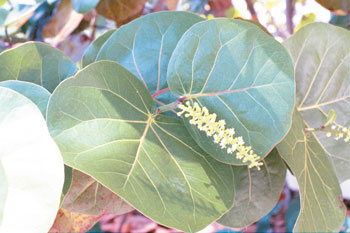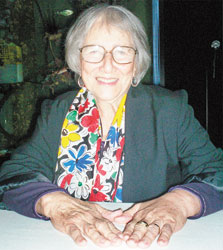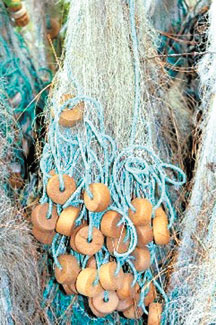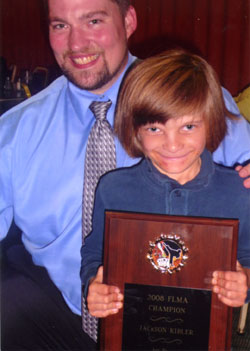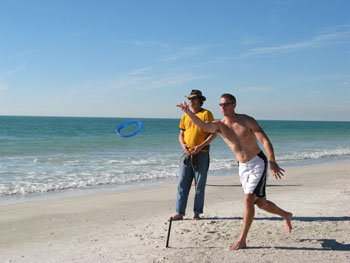CORTEZ – As Florida towns outgrow their roots,
their history is often relegated to a county commission proclamation
and a seldom-visited Web site.
Not so in Cortez.
The commercial fishing village is not a Disney version of an actual
place. The docks and houses are not distressed wood made to look
historic. They, and the people who work there, are honestly weatherworn,
soaked in saltwater and dried in the sun to a leathery tan.
This is 100 percent real Florida.
The boats and crab traps and nets in the yards are not flea market
finds, but the tools of the few remaining commercial fishermen in
Florida who go to the sea in boats for sunny days and stormy nights
on end.
Sure, there’s a museum in Cortez, two in fact, if you count Alcee
Taylor’s garage, which he’ll open for you if he’s not napping.
The other museum, the Florida Maritime Museum at Cortez, is, fittingly,
in a restored 1912 schoolhouse, carrying on the educational mission
it was built for. Next to it is the 1890s-era Burton/Bratton store,
relocated to the museum site and now under restoration as the future
Cortez Family Life Museum. Behind the store is the Florida Institute
for Saltwater Heritage, or FISH, Preserve, where hikers and kayakers
can follow a trail of mangroves along Sarasota Bay, known as the "kitchen" to residents whose parents and grandparents up to
five generations back relied on it for food.
Woven into this historical fabric like cotton in a handmade mullet
net is the Cortez Village Historical Society, which celebrated its
25th anniversary during the 27th Annual Cortez Commercial Fishing
Festival last weekend.
Yes, they are sweet-tart little old ladies who bake strawberry
shortcake for the festival each year, whose bake sale proceeds along
with $2 admission fees over 27 years have managed to buy nearly 100
acres of prime Florida waterfront in the FISH Preserve.
They are also 300 college professors, artists, authors, fishermen,
cooks, churchgoers and memory-like-an-elephant natives who have supported
most of the village’s activities since the society was founded in
1984.
With little more than their convictions and a stubborn streak,
they have chased off a Chris-Craft factory, a high-rise bridge from
Cortez to Anna Maria Island, a developer who wanted to build a mid-rise
recreational fishing "boatel" condominium
on the working waterfront and a marina developer who would have made Cortez Trailer
Park residents homeless.
They’ve staged 1960s-style, sign-carrying protests against boatbuilders.
They’ve written letters to government officials protesting the constitutional
amendment that banned gill nets, which gutted the commercial fishing
community in 1994.
And they frequently add fuel to their sassy reputation. Once, society
treasurer Mary Fulford Green wrote out the group’s objections to
a proposal on a 12-foot-long piece of freezer paper, and unrolled
it like a scroll as she read it to the county commission.
The group has surveyed every family in Cortez about their history,
their memories, their joys, and their tragedies at sea, in wartime
and at home. They researched and compiled all the documentation required
to get the village designated as a historic neighborhood in the Manatee
County Comprehensive Plan, then got it listed as a Historic District
on the National Register of Historic Places.
Along with the Organized Fishermen of Florida, they raised $12,500
to save the 1890s store from demolition when the U.S. Coast Guard
bought the land for its Cortez station.
They help organize the annual Cortez Natives Picnic, which brings
family members from all over the country back to Cortez for smoked
mullet and grits with sweet tea.
They’ve also been writing.
Their grant applications for numerous projects have netted well
over $100,000. One grant allowed society mainstays Mary Green and
Linda Molto to write "Cortez
- Then and Now," the Bible for Cortez historians. Other books include "Commercial
Fishing Through the Centuries" and the newest ring bound version of "What’s
Cooking in Cortez," a down-home southern cookbook with recipes for seafood,
shortcake and homemade ice cream that’s on sale at this weekend’s festival (along
with some of the food that made it famous, and an anniversary edition of the
Cortez Village Historical Society T-shirt).
The Cortezian newsletter keeps folks up to date on everything from
community events to who’s in the hospital or nursing home to births
and deaths in the community.
There’s also a free walking tour map featuring photos and descriptions
of 92 historic buildings in the village, and two videos on Cortez
that the society helped produce.
The village has its annual proclamation from the county commission
that one weekend a year is officially known as "Cortez Festival Days." And the Cortez
Village Historical Society has its website, http://cortezvillage.org.
But you can’t smell salt air and mullet smoking on the Internet.
Experience living history daily, in Cortez.
